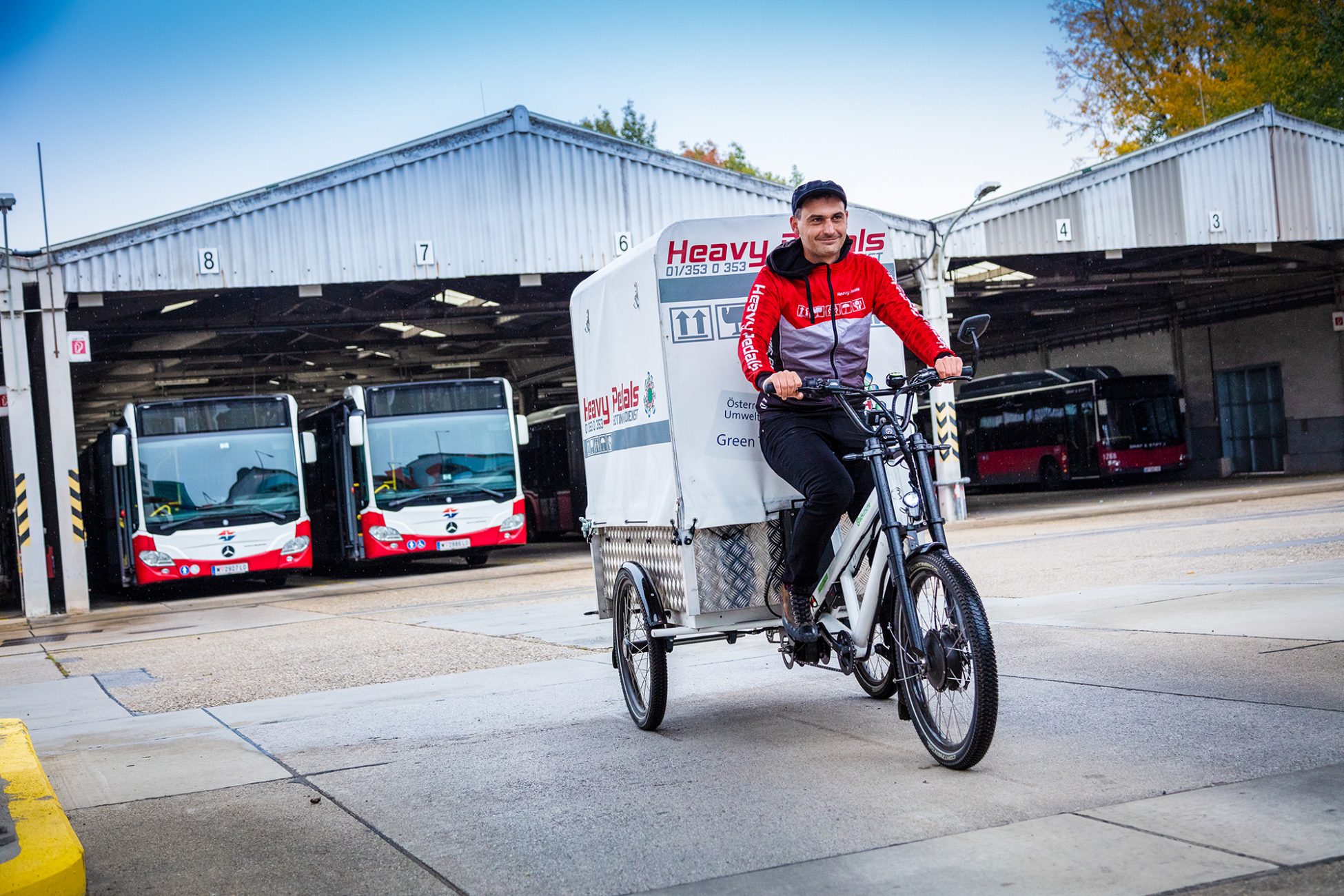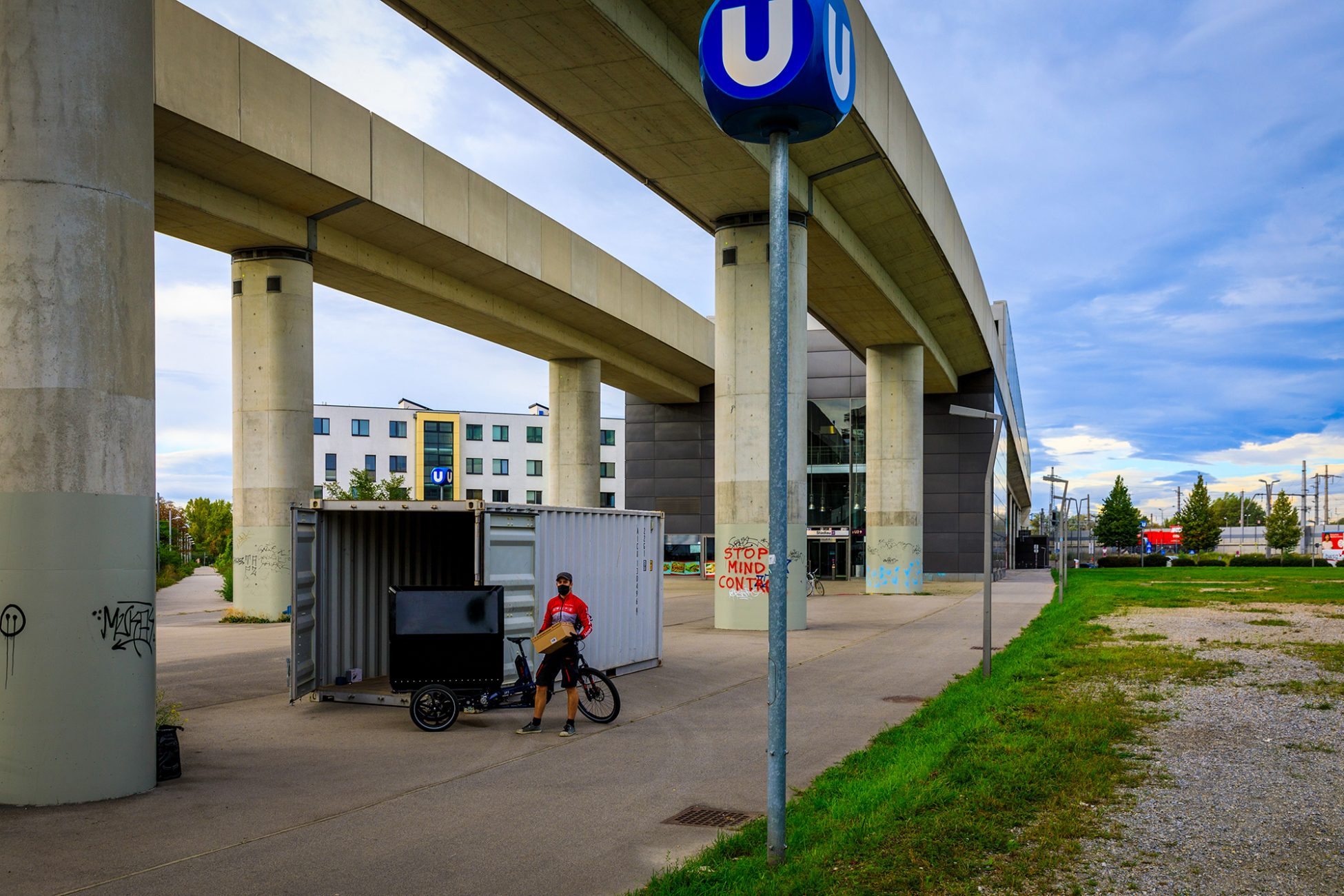Setting up micro hubs is a promising approach to last-mile delivery. Yet, what is often missing is a suitable space in city centres. Using public transport facilities such as a bus garage or tram depot for logistical operations is one possible solution to this problem. In the RemiHub project, Roland and his team prove that sometimes it’s not the most complex solutions but rather simple concepts that have the greatest impact, especially, if the right partners are on board.
Vienna is a city with almost 2 million inhabitants and an annual parcel volume of about 100 million. Needless to say, both create a lot of movement. The major problem with all these goods is that many of them are transported to the city from distribution centres, warehouses and depots that are located outside. Cities like Vienna rely heavily on trucks to operate this last mile, mainly because the distance is too long for cargo bikes and other zero-emission vehicles.
But there are ways to deal with this issue. Solutions that aim to reduce the number of trucks in cities. Among others, micro hubs, micro depots, or logistics hubs. While the concept is not new, many cities and logistics companies are still struggling to find suitable or even available space to set up these hubs in dense urban areas.
Public Transport and City Logistics – a Great Match
Sometimes, however, the answers are right in front of us. All that’s needed is to approach the problem from a slightly different angle. In that case, to tackle the issue of space.
Thinking of transport in a city, there’s one player that stands out. Someone, who owns a great variety of facilities that are not only easily accessible by road and have electricity in place, but more importantly, facilities that provide enough space for a container as well as for the movement and shunting of delivery vehicles. That is the city’s public transport provider.
Roland Hackl and his colleagues from tbw research saw the great potential of public transport facilities for last-mile delivery and wanted to put it to the test: Are these facilities suitable for setting up a micro hub? Can both parties operate without interfering with the other? And, last but not least, does this concept have the potential for a larger rollout? That was the beginning of RemiHub (a composition of the German word ‘Remise’ – Engl.: tram depot, and ‘logistics hub’), a project in collaboration with Vienna’s public transport provider, Wiener Linien (find out more about project partners here).

Lesson No. 1: It’s Not Rocket Science
The first trials were rather small in scale, yet incredibly valuable in terms of insights. The most important lesson that Roland identified is that very little is needed to set up a RemiHub:
“We’re not the ones who believe that technology and digitization are the answer to everything. We’re pragmatists – the solution has to be simple; it has to work in everyday life and most importantly, it has to solve real-world problems.”
In other words, site-related requirements are deliberately kept to a minimum to ensure that the RemiHub concept is suitable for a larger rollout. “It’s not rocket science”, as Roland clarifies. You have a logistics company deliver goods to a RemiHub, may that be in the form of a container that is parked at the site, or simply a van or truck that functions as a micro depot, and finally bicycle couriers who operate the last mile. Not much is needed for that. Whether a tram depot, a bus garage or even the space beneath an elevated metro line, RemiHubs can be set up at all these locations.
In terms of complexity, one interesting aspect of the RemiHub project is that the technological aspect plays a comparatively marginal role. Or, put differently, technology is crucial, but there is no need to reinvent the wheel. The solutions are already there. In the test run, logistics partner DPD delivered the goods to the hub and provided bicycle couriers from Heavy Pedals, who operated the last mile, with their app. That way, seamless tracking and POD could be guaranteed.
Co-using public transport facilities for logistical operations poses some challenges too. However, none of them insoluble. First, there are certain legal questions, e.g. who is allowed to access the space? Is a special permit needed to carry out logistical operations? Who is liable in case of accidents? And second, given the very nature of public transport facilities, there are some operational limitations, e.g. time of operation, size of available space, entry height, video surveillance etc. It’s better to address these issues early on in the planning process than when it’s almost too late.

Lesson No. 2: Collaboration Is Key
Roland explains that in the end, it’s not the operational part that makes RemiHub stand out. The test runs have successfully proven the viability of the concept: To reduce the number of trucks in cities, public transport facilities are suitable for setting up micro hubs for logistical purposes and using cargo bikes for last-mile delivery. Still, as Roland points out, it’s not rocket science.
“The innovative thing about the project is that it sparked new forms of governance. It’s how the project triggered new forms of collaboration, bringing new actors to the table and attracting their interest.”
The second lesson is that collaboration plays a key role in the success of the project. Having the right partners on board can make a difference both in the planning and operational part of the project but also in terms of visibility and impact. For the success of RemiHub, collaborating with Vienna’s public transport provider Wiener Linien was crucial. Not only because Wiener Linien provided the facilities to set up the micro hubs, but also because of their strong role in the city. One could go so far as to say that this has decisively shaped the way the public perceived the project.
The whole project team was surprised by the extensive media coverage RemiHub received both on a national level and outside of Austria. This had a welcome side effect, or as Roland explained, “suddenly we received calls from a municipal department, real estate developers and operators of inner-city garages who were all telling us that they had space for us too”. All these offers made clear that available space may be limited in dense urban areas, but that doesn’t mean that it doesn’t exist.
Over the past months, the concept has gained importance far beyond the scientific community. Not only was the implementation of 10-15 RemiHubs included in the 2020 coalition agreement of Vienna’s new government, but due to the great success of the concept “we are now actively involved in the planning process of some new infrastructure projects and redevelopment projects”, as Roland explains. And this wouldn’t have been possible without the project partners.
Keep the Momentum Going
Summing up, RemiHub is on track to evolve from a research project into a well-established logistical solution that can significantly help to reduce the number of trucks in city centres. More and more urban planners and other key stakeholders are realising that logistics is something that should be included in the planning from the very beginning, and not just after. With a little pride in his voice, Roland declares that the topic of sustainable city logistics has gained momentum since the project has started. The challenge now is to keep it going!


